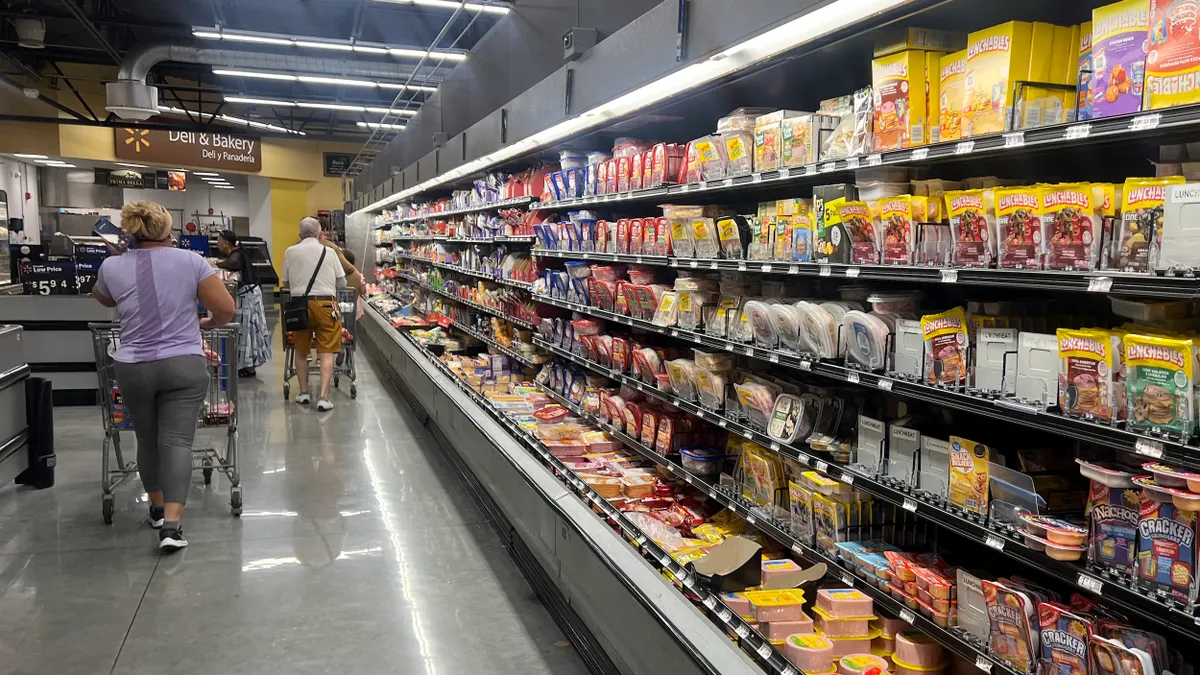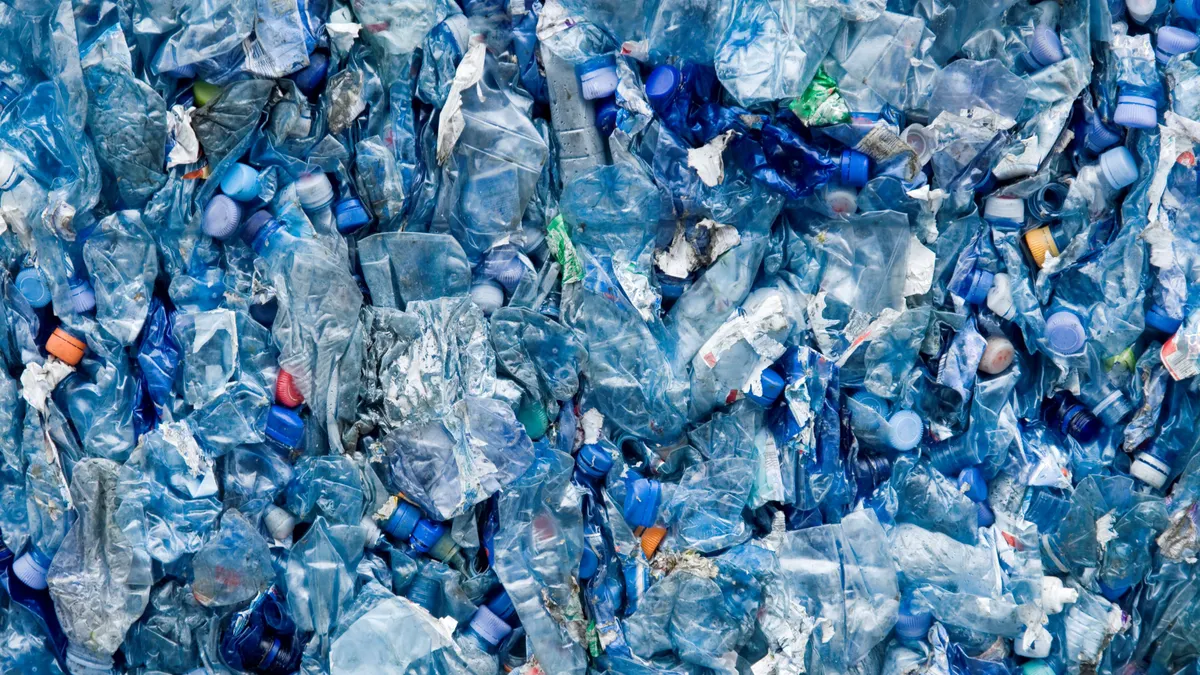Last week's 2018 WASTECON was about much more than recycling, though the topic was inescapable in sessions and conversations.
We've already been highlighting many of the biggest takeaways from the event, including the MRF Summit co-hosted by SWANA and ISRI during the week, and now have a few parting thoughts on what else piqued our interest. Here are a few of the most intriguing threads that we saw come up and expect will continue to be relevant in the months ahead.
Marine Litter
A session entitled "Battling the Marine Debris Blues" outlined just how dire the world's ocean plastic problem has become. Jenna Jambeck, associate professor of environmental engineering at the University of Georgia, explained how "we can’t imagine our lives without plastic right now" because it's such a fundamental material in so many products. She framed the challenge as a global issue that will require an integrated approach.
Dominic Hogg, founding director of Eunomia Research & Consulting, said that thankfully this is finally in the public consciousness — especially in the U.K. "I can't imagine an issue that sort of shot up the political agenda quite as rapidly as this one has," he said, noting that as that interest leads to a desire for action people also need to remember that "just making stuff recyclable doesn't solve the litter problem."
Keith Christman, managing director of plastics markets at the American Chemistry Council, said his organization agrees that "plastic in the environment is totally unacceptable." Though he cautioned against a potential rush to banning products and emphasized the material's "important societal benefits" in terms of preserving food, facilitating healthcare and reducing greenhouse gas emissions.
"Those benefits will be lost if we don't do a better job of keeping plastics and other trash out of the environment," said Christman.
Key questions: Can the marine debris crisis be solved without seriously rethinking how much plastic companies make, and consumers buy, around the world? What role should plastics producers and other industry stakeholders play in this international dilemma?
Single-stream vs. dual-stream
A growing number of people have begun pointing to the adoption of single-stream as the reason contamination rates have gone up in recent years, which many believe was a key factor in China restricting its scrap imports. While there have been scattered reports of certain programs switching back to dual-stream for some or all customers, that scenario is still an exception to the rule.
An informal survey of attendees during a recap of breakout sessions in the MRF Summit showed about two-thirds of the room was still sticking with single-stream, and few believed it had any affect on the marketability of material. During his keynote interview, Waste Connections CEO Ron Mittelstaedt said he didn't necessarily think dual-stream was the answer either, though he did take a moment to advocate for removing glass from the mix.
Lisa Skumatz, principal at Skumatz Economic Research Associates, made the case for why "single stream is not equal to the devil," and said it all comes down to technology. "Right now, single stream can be cleaned up to the specs that you've been talking about." Instead, she said the real issue has been a race to the bottom in terms of bale quality.
"It began the first time a mill or another end user bought an out-of-spec bale and didn't reject it," said Skumatz. "As long as you do that, there's no incentive for anybody to clean it up more."
During another session all about the two options, panelists seemed to indicate it was all about what made the most sense locally. Simon Ellin, CEO of The Recycling Association, said dual-stream was on the rise in the U.K. Willie Puz of Palm Beach County, Florida said his dual-stream system was staying the course and had even recently attracted one municipality back into the fold. Joaquin Mariel, vice president of operations at Balcones Resources in Texas, stood by his company's single-stream process and said "we work to get what we want out of what we're given."
Key question: Will any more municipalities make the switch back to dual-stream, or some other alternative, as contracts come up for renegotiation and prices heading into 2019? Will single-stream plants be able to get down to the specs they need to stay viable if not?
Striving for 0.5% and Domestic Potential
One main factor in whether single-stream plants can meet the new de facto contamination spec is whether they actually need to if China has effectively shut its doors. Some also wondered during the week whether the costs required to do so, in terms of labor and capital upgrades, had reached a point of diminishing returns.
"I think it is attainable, but at what cost, and would the market bear that cost?" asked Bill Keegan, president of Dem-Con Companies. "What quality material can we make for what the generators are willing to pay?"
Bill Moore, president of Moore Associates, said to his knowledge the best U.S. MRFs are hitting about 2% contamination right now. He questioned whether on the fiber side it would actually make more sense to catch that last bit of contamination in the wet phase of pulping at a mill rather than the dry sorting process at a MRF.
As for how long it might take for more domestic paper mills to open up, panelists had a range of responses, but all expected it could take multiple years. Mittelstaedt said he expected to see a major acceleration in investment next year and expressed confidence that "if there's a quality product put out by us as a company or by us as an industry, the markets will develop."
On the plastics side, CEO Nina Butler of More Recycling said if the demand for post-consumer recycled content isn't keeping up with the supply for certain categories then it might be time to re-frame the conversation.
"We need to develop the cache around PCR being the preferable material because of its C02 savings." Butler said this fits into a broader sustainable materials management discussion that needs to go beyond a narrow focus on collection and diversion. That means more education on which materials are best for certain actions or performance standards, and some of those may be plastic.
"Shifting to a heavier material is not going to get us out of this challenge, said Butler. "We have to both pick the lowest impact product, and we have to find a way to recycle it."
Key Question: Will de facto quality standards shift as more domestic capacity comes online? What will encourage that capacity, and the necessary demand pull behind it, to help capture all of the material that is currently without a clear end market?
Framing the Narrative
As all of these conversations, and many more, play out in the months ahead, the coming shifts will likely still merit plenty of media coverage. This will be especially true if more local programs or reduce or suspended, a move which many viewed as dangerously irreversible.
Attendees talked frequently throughout the week about getting on the same page with a message about recycling's long-term viability, as well as China's role in this current moment.
"The scrap industry is a global industry and this long predates China," said Robin Weiner, president of ISRI. "China is the trigger that exposed a lot of the weaknesses in the recycling system."
Weiner said it's key to remember it will take time to find new homes for the 30% or more worth of material that previously went overseas. As more Southeast Asian countries begin to limit what they'll take, some material may be in limbo for a period of time. Meanwhile, associations are trying to keep recycling's reputation viable as a key public service, but also recognize the underlying factors that led to this point.
"Part of how we got into this situation is we got reliant on China," said SWANA CEO David Biderman. "Those chickens are coming home to roost now and one of the solutions here is actually generating less waste."
Above all else, it's also important to remember this material isn't going away and global waste generation is projected to rise exponentially in the years to come.
"We as an industry definitely need to avoid this ostrich effect. The stakes are too high," said Butler. "Things do not look good for recycling if we do nothing."
Key question: Can everyone stay unified on that message of recycling being a key component of any integrated waste management system, and not just an environmentally friendly add-on? Can the industry find a way to truly reconcile its export reliance and change the system?
Think we've missed anything particularly relevant from a session that you attended? Have thoughts on where these storylines may be heading? As always, you can reach us at waste.dive.editors@industrydive.com

















